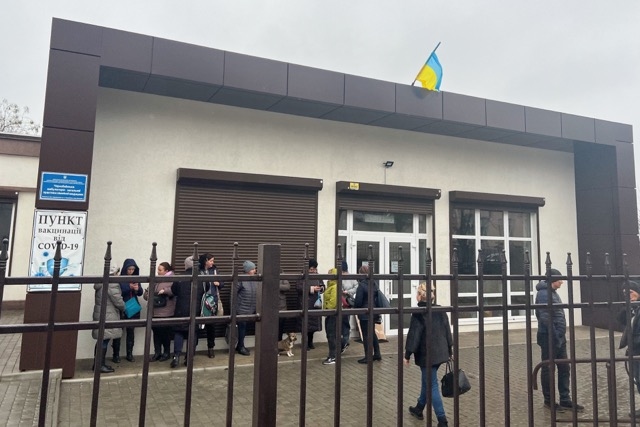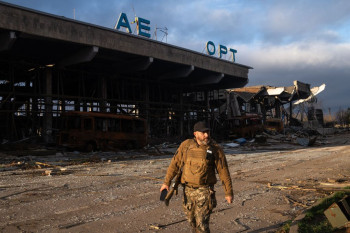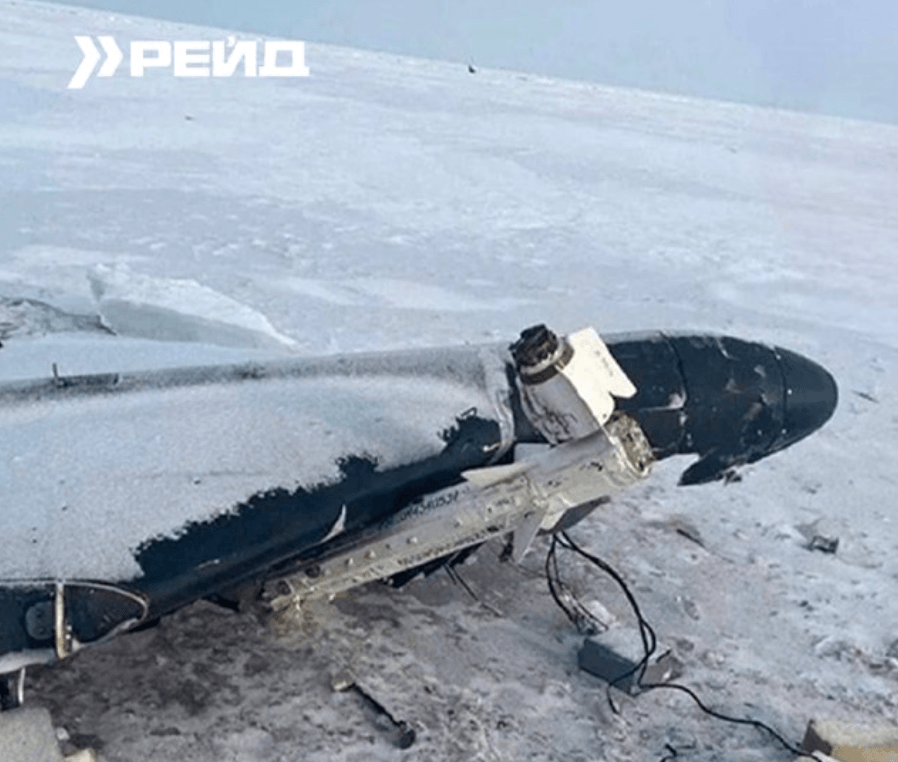In occupied Chornobaivka, doctor shortage forced driver to become wounded people’s last hope
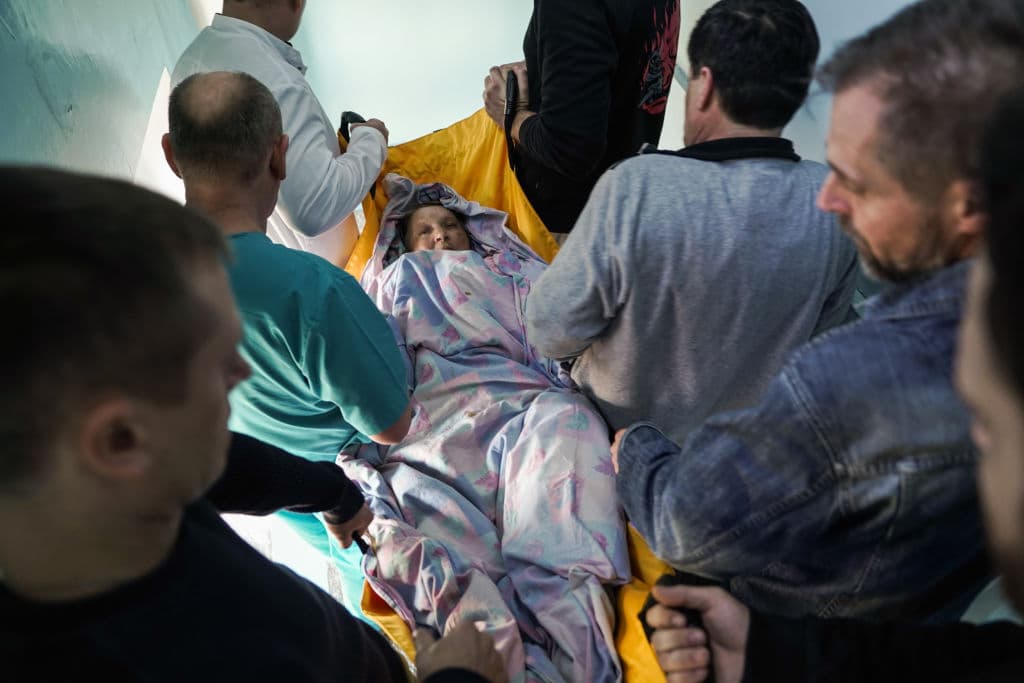
CHORNOBAIVKA, Kherson Oblast – Hours before the Ukrainian forces arrived to liberate this village outside Kherson on Nov. 11, a breathless local man sprinted into its one small hospital.
The morning’s shelling had hit his neighbor — the local saw him screaming, covered in blood. With no mobile service or any other utilities in Chornobaivka, the man had to run 600 meters to summon emergency medical support.
The occupation had stressed the small hospital to its limit. Its medical supplies were dwindling and most of its doctors had already fled, leaving only the director and a family doctor, along with a few junior personnel. The depleted staff had to take on many new responsibilities just to keep the place running.
That’s how Petro Omelchuk, 65, a driver by profession, found himself thrust into the role of emergency service worker during the occupation. On Nov. 11, he was at the reception desk, when the wounded man’s neighbor burst through the door.
Omelchuk and two nurses immediately got into a car, as the neighbor pointed the way to the scene of the attack. When they got there, the driver immediately saw a man lying in the yard, impaled through the stomach by a 15-centimeter long piece of shrapnel.
“The house was scattered, and he was buried under shrapnel and glass,” Omelchuk told the Kyiv Independent at the Chornobaivka hospital, now back under Ukrainian control, a few weeks after the incident.
Omelchuk wrapped the wounded man in a blanket and carried him into his car. He then drove 10 kilometers to the regional hospital in Kherson, cutting through the dirt roads to get there quicker.
Something was off about that day. The Russian checkpoint between Kherson and Chornobaivka was gone, and there were no soldiers to be seen. But Omelchuk said he was so focused on driving that he didn’t have time to consider why the checkpoint was missing, not with his passenger still bleeding and crying out in pain.
Shortly after dropping off the victim at the Kherson hospital, Omelchuk was informed that the wounded man had died. Omelchuk only found out when he returned home to Chornobaivka that the victim was his acquaintance with whom he often talked at the local market.
He didn’t recognize him because of the dirt and blood covering the victim’s face.
On the same day, an elderly woman was also wounded in Chornobaivka in the same round of shelling, with the shrapnel cutting deep into her leg. Omelchuk was informed that a resident drove her to Kherson. She also didn’t survive.
Omelchuk said that both would have lived if they had access to doctors and proper medicine in the village.
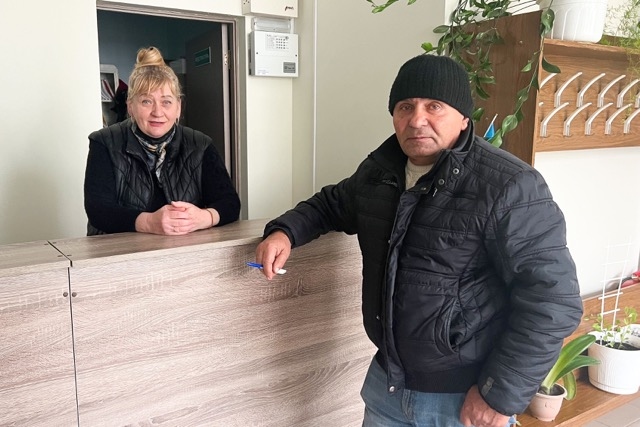
Run-down hospital
Once a peaceful village, home to nearly 10,000 people, Chornobaivka is now strewn with the trauma of Russian occupation.
Neither the local authorities nor residents were ready for the full-scale war. Chornobaivka had no ambulance even before the full-scale invasion. Patients in critical conditions would be taken to Kherson due to the lack of medical equipment for complex surgeries in the village.
By early March, Russian troops had established control over Kherson and the surrounding areas, strictly controlling the movement in and out of the city. The local hospital would have to do its best.
The first weeks of occupation were particularly difficult for the hospital. The casualty rate was at its peak due to shelling. Treating wounded civilians while continuing to help regular patients with their illnesses proved to be an immense challenge.
That’s why Omelchuk, whose usual job consisted of medical supply delivery and helping less mobile patients get to the hospital, had to learn how to carefully carry patients with excessive bleeding into a car and drive in a way that causes minimal stress.
Omelchuk understood the risks of working under occupation. There was a time when he thought about leaving Chornobaivka because of the massive number of Russian tanks and soldiers in the village.
Despite the threat of Russians taking away his car or abducting him, he continued to drive back and forth between Kherson and Chornobaivka to bring medical supplies. He was always available if someone needed to be driven to the hospital in Kherson.
Omelchuk drove a regular white car with the words “help” in Ukrainian and a medical cross.
It’s still a mystery to Omelchuk why he was allowed to continue working. “(Maybe) they just felt sorry for me that I was small and old,” he said.
Omelchuk said he doesn’t know how many times he brought patients to Kherson. “It’s impossible to remember everything,” he said, recounting the trauma he experienced.
One such experience happened in May. There was a badly wounded mother screaming for her 34-year-old son until she was taken to the hospital. She died in the Kherson regional hospital without finding out that her son was found dead under the rubble of a destroyed house the next day, Omelchuk recalled.
“They were good, young people,” he said.
Choosing to stay behind
Throughout the occupation, at least 18 civilians were killed and 28 were wounded in Chornobaivka, according to village council data seen by the Kyiv Independent.
Among the slain were two 23-year-olds, brutally shot dead by Russian soldiers on the streets on March 4.
“I never thought that I would issue such death certificates,” the small hospital director, Olena Kasatkina said, referring to the day she signed the paper for the murdered young men’s relatives.
As head of the facility, the 62-year-old said it was important to keep the basic services running despite the overwhelmed hospital’s limitations “because people get sick and ask for help.” Besides treating the wounded, the medical staff also took care of patients ill with Covid-19 and cardiovascular diseases.
“Every day, whether they (Russian troops) shell or don’t shell (Chornobaivka), we leave home and head to work,” Kasatkina told the Kyiv Independent.
The biggest challenges of running the small hospital under Russian occupation involved the unstable utilities and shortages of even the most basic medicines, like pills to lower blood pressure, according to Kasatkina.
The center was able to treat less critical patients and hand out some basic medicine for free, as the supplies were provided from Kherson, and the staff received salaries via Ukrainian bank cards from the National Health Service of Ukraine, Kasatkina said.
But that didn’t solve all their problems, as there were big gaps in the availability of almost everything.
It was “very difficult morally” to continue working even if Russian troops didn’t directly threaten the hospital staff, Kasatkina said. Yet she continued to work to care for patients.
It was only in May that Russian troops began patrolling the center of the village, both on foot and by car. They took over the village council administrative building on May 2 and began putting the Russian flag everywhere.
The Russians also came to the hospital. They threatened the staff that they would “shoot down the building” if the Russian flag on the hospital was taken down, according to Omelchuk.
The staff immediately took the flag down as soon as Ukrainian soldiers arrived on Nov. 11.
Kasatkina’s lowest points were “when a person is dying, but (Russians) don’t let the ambulance through.”
Despite the threat of working independently while Chornobaivka was occupied, the hospital staff said they did their best to continue the operations of the only medical facility for the village’s predominantly-elderly residents.
“We did what we could,” Kasatkina said.


